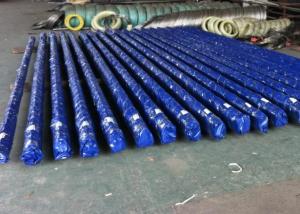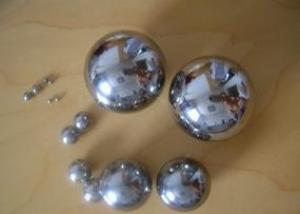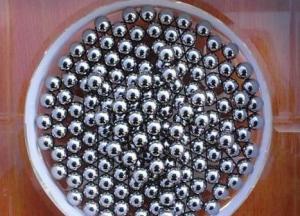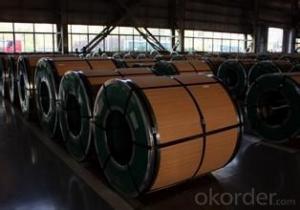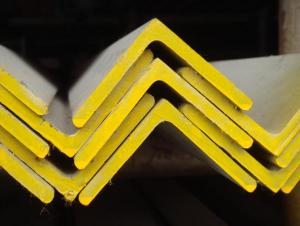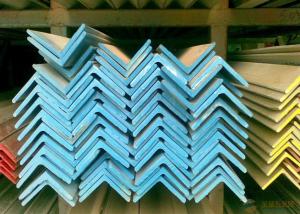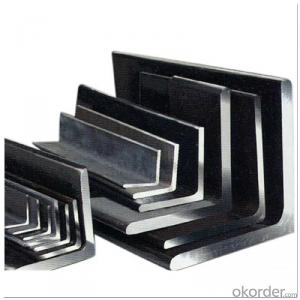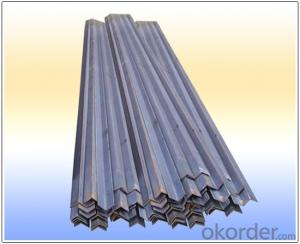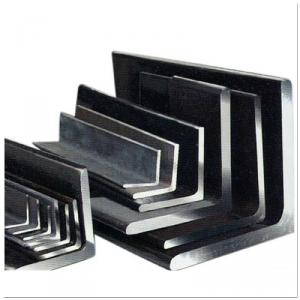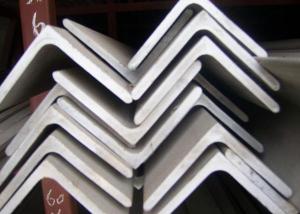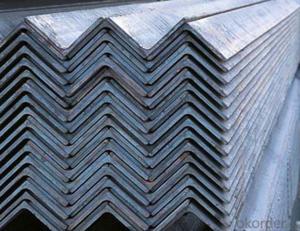Best Quality for Equal Stainless Steel Angles
- Loading Port:
- China Main Port
- Payment Terms:
- TT or LC
- Min Order Qty:
- 1 Ton m.t.
- Supply Capability:
- 500 Tons Per Month m.t./month
OKorder Service Pledge
OKorder Financial Service
You Might Also Like
Stainless Steel Angles
General Information of Stainless Steel Angles
1. Grade: SS200, 300,400 series
2. Size: 25×25×3 mm-100×100×10mm
3. Process: HRAP
4. Length: 2-6m
5. Shape: Equal
6. Delivery: within 20 days
7. MOQ: 1 ton
8. Certificate: ISO 9001:2008, SGS
9. Package: Standard Export Packing, or put into wooden boxes according to your requirement
10. Application: Construction, Marine, Industry and so on
Specification of Stainless Steel Angles
Name | Stainless Steel Angles | |||||
Standard | ASTM A554, A312, A249, A269 and A270 | |||||
Material Grade | 304,316,201,202, 316L,430 | |||||
Length | 6m or as customers' request | |||||
Tolerance | a) Thickness: +/-0. 15mm | |||||
b) Length:+/-4. 5mm - 0mm | ||||||
Surface | 180G, 320G, 400G Satin / Hairline(Matt Finish, Brush, Dull Finish) 400G, 500G, 600G or 800G Mirror finish | |||||
Application | Decoration construction, upholstery, industry instruments | |||||
Test | Squash test, Extended test, Water pressure test, Crystal rot test, Heat treatment, NDT | |||||
Chemical Composition of Material | Composition Material | 201 | 202 | 304 | 316 | 430 |
C | ≤0.15 | ≤0.15 | ≤0.08 | ≤0.08 | ≤0.12 | |
Si | ≤1.00 | ≤1.00 | ≤1.00 | ≤1.00 | ≤1.00 | |
Mn | 5.5-7.5 | 7.5-10 | ≤2.00 | ≤2.00 | ≤1.00 | |
P | ≤0.06 | ≤0.06 | ≤0.045 | ≤0.045 | ≤0.040 | |
S | ≤0.03 | ≤0.03 | ≤0.030 | ≤0.030 | ≤0.030 | |
Cr | 16-18 | 17-19 | 18-20 | 16-18 | 16-18 | |
Ni | 3.5-5.5 | 4-6 | 8-10.5 | 10-14 | ||
Mo | 2.0-3.0 | |||||
Mechanical Property | Material Item | 201 | 202 | 304 | 316 | |
Tensile Strength | ≥535 | ≥520 | ≥520 | ≥520 | ||
Yield Strength | ≥245 | ≥205 | ≥205 | ≥205 | ||
Extension | ≥30% | ≥30% | ≥35% | ≥35% | ||
Hardness (HV) | <253 | <253 | <200 | <200 | ||
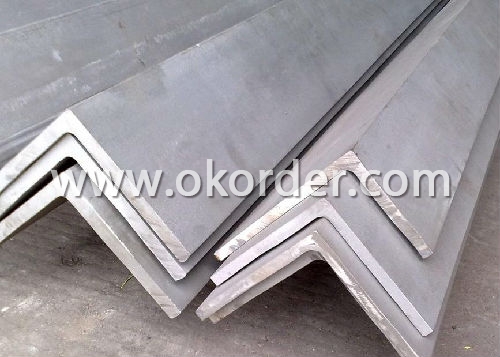
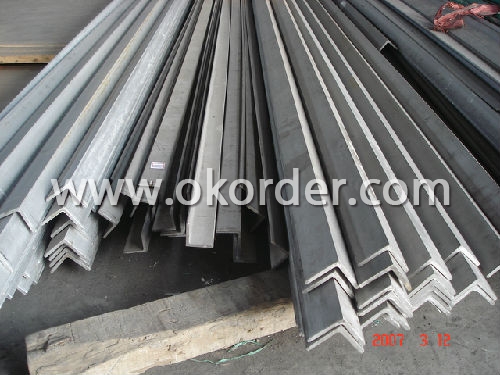
- Q:How do I choose the right stainless steel angle for my project?
- When choosing the right stainless steel angle for your project, consider factors such as the grade of stainless steel, the dimensions and thickness needed, as well as the specific requirements of your project. Additionally, take into account the intended use and environmental conditions the angle will be subjected to, as this can impact the choice of stainless steel grade. It is recommended to consult with experts or suppliers who can provide guidance based on your project's specifications and requirements.
- Q:What are the different types of corrosion that stainless steel angles can resist?
- Stainless steel angles possess outstanding resistance to corrosion, rendering them highly suitable for a wide range of applications. They can withstand several types of corrosion, including: 1. Uniform Corrosion: This is the most prevalent form of corrosion, whereby corrosive substances attack stainless steel angles evenly across their surface. The formation of a passive film on stainless steel helps prevent this kind of corrosion. 2. Pitting Corrosion: Stainless steel angles exhibit a high resistance to pitting corrosion, which manifests as localized holes or pits on the metal's surface. The presence of chromium in stainless steel forms a protective layer that hinders pitting corrosion. 3. Crevice Corrosion: Stainless steel angles can effectively resist crevice corrosion, which occurs in confined spaces such as gaps, joints, or areas with deposit build-up. The passive film on stainless steel acts as a barrier against crevice corrosion. 4. Galvanic Corrosion: Stainless steel angles demonstrate excellent resistance to galvanic corrosion, caused by contact with dissimilar metals. The low electrical conductivity of stainless steel minimizes the galvanic effect when in contact with other metals. 5. Intergranular Corrosion: To prevent intergranular corrosion, stainless steel angles are typically alloyed with elements like titanium or niobium. This type of corrosion occurs along the grain boundaries of the metal and can be avoided through proper alloying and heat treatment. 6. Stress Corrosion Cracking: Stainless steel angles exhibit good resistance to stress corrosion cracking, a form of corrosion induced by a combination of tensile stress and a corrosive environment. The alloy composition and heat treatment of stainless steel enhance its resistance to this type of corrosion. In conclusion, stainless steel angles offer superior resistance to various forms of corrosion, making them a dependable choice for applications that require durability and longevity.
- Q:Can stainless steel angle be used in architectural façades?
- Yes, stainless steel angle can definitely be used in architectural façades. Stainless steel is a versatile material that offers numerous benefits for architectural applications. Its inherent strength, durability, and corrosion resistance make it an ideal choice for exterior cladding and façade systems. Stainless steel angles can be used to create visually appealing and structurally sound façades. The angles can be installed vertically or horizontally, allowing for various design possibilities. They can be used as framing elements, creating a sleek and modern look for the building's exterior. Additionally, stainless steel angles can be easily customized to meet specific design requirements. They can be cut, shaped, and welded to create unique architectural features. The material's reflective properties can also be utilized to create interesting visual effects, especially when paired with glass or other materials. Furthermore, stainless steel is a low-maintenance material, which is crucial for architectural applications. It requires minimal cleaning and upkeep, making it suitable for long-term use in outdoor environments. Its resistance to corrosion and weathering ensures that the façade will retain its appearance and integrity over time. In summary, stainless steel angle can be used effectively in architectural façades due to its strength, durability, versatility, and low-maintenance properties. It offers designers and architects a wide range of possibilities to create visually stunning and long-lasting building exteriors.
- Q:What are the common grades of stainless steel angles?
- The common grades of stainless steel angles include 304/304L, which is the most widely used grade, as well as 316/316L, which offers higher corrosion resistance.
- Q:What is the minimum thickness for stainless steel angles?
- The minimum thickness for stainless steel angles can vary depending on the specific grade and application. However, in general, the minimum thickness for stainless steel angles is typically around 1/8 inch or 3.175 mm. It is important to note that thicker angles may be required for certain structural or load-bearing applications to ensure sufficient strength and stability. Additionally, specific industry standards or project specifications may dictate minimum thickness requirements for stainless steel angles in certain applications. Therefore, it is always recommended to consult relevant codes, standards, or engineering guidelines to determine the appropriate minimum thickness for stainless steel angles in a specific context.
- Q:Are stainless steel angles recyclable?
- Indeed, stainless steel angles have the capability to be recycled. In the recycling industry, stainless steel is highly esteemed and sought after due to its ability to maintain its strength and durability throughout numerous recycling processes. Stainless steel angles consist of an alloy composed of iron, chromium, and other elements, which grants them resistance to corrosion and renders them suitable for a wide array of applications. Once stainless steel angles have reached the end of their useful lifespan, they can be recycled and transformed into new products without any compromise in quality. As a result, stainless steel angles serve as an environmentally conscious choice as they can be endlessly reused and repurposed, thereby reducing the necessity for raw material extraction and minimizing waste.
- Q:Are stainless steel angles suitable for food processing applications?
- Indeed, food processing applications find stainless steel angles to be appropriate. The food industry often favors stainless steel for its hygienic qualities, durability, and ability to resist corrosion. In food processing equipment, such as conveyor systems, shelves, tables, and machinery frames, stainless steel angles are utilized. The smooth and non-porous surface of stainless steel simplifies cleaning and maintenance, guaranteeing compliance with the rigorous hygiene standards mandated in the food processing industry. Furthermore, stainless steel's resistance to chemicals, heat, and impact ensures its reliability and longevity when applied to food processing.
- Q:How do you calculate the shear stress of a stainless steel angle?
- To calculate the shear stress of a stainless steel angle, you need to know the shear force acting on the angle and its cross-sectional area. First, determine the shear force acting on the stainless steel angle. This can be obtained from the external loads or forces applied to the angle. Next, calculate the cross-sectional area of the stainless steel angle. The cross-sectional area is the product of the width and thickness of the angle. Once you have both the shear force and the cross-sectional area, you can calculate the shear stress using the formula: Shear Stress = Shear Force / Cross-sectional Area The shear stress is usually expressed in units of force per unit area, such as pounds per square inch (psi) or pascals (Pa). It is important to note that the shear stress calculation assumes the stainless steel angle is in pure shear, meaning there are no bending or torsional forces acting on it. If there are additional forces or moments acting on the angle, a more comprehensive analysis should be performed to accurately calculate the shear stress.
- Q:What are the maintenance requirements for stainless steel angles?
- Stainless steel angles require regular maintenance to ensure their longevity and optimal performance. Some of the key maintenance requirements for stainless steel angles include: 1. Regular Cleaning: Stainless steel angles should be cleaned regularly to remove any dirt, dust, or debris that may accumulate on the surface. This can be done using a mild detergent or cleaner and a soft cloth or sponge. Avoid using abrasive cleaners or scrub brushes, as these can scratch the surface of the stainless steel. 2. Avoid Harsh Chemicals: It is important to avoid using harsh chemicals or cleaners that contain chlorine or bleach on stainless steel angles, as these can corrode the surface and cause damage. Instead, opt for mild, non-abrasive cleaners that are specifically designed for use on stainless steel. 3. Remove Stains and Spots: If stainless steel angles develop stains or spots, they can be removed using a mixture of baking soda and water, or by using a stainless steel cleaner. Apply the cleaner to the affected area and gently scrub with a soft cloth or sponge, following the grain of the stainless steel. 4. Prevent Scratches: While stainless steel is highly durable, it can still be prone to scratches, especially if exposed to abrasive materials or rough handling. To prevent scratches, avoid using abrasive cleaning tools, and be cautious when moving or handling stainless steel angles. 5. Protect from Corrosion: Stainless steel is known for its resistance to corrosion, but certain conditions can still cause it to corrode over time. To protect stainless steel angles from corrosion, avoid prolonged exposure to saltwater, acidic or alkaline substances, and high humidity environments. If stainless steel angles are installed outdoors, consider applying a protective coating or using a stainless steel grade that is specifically designed for outdoor use. By following these maintenance requirements, stainless steel angles can maintain their appearance, durability, and performance for many years, ensuring they continue to serve their intended purpose effectively.
- Q:What is the fatigue strength of stainless steel angles?
- The fatigue strength of stainless steel angles relies on various factors, including the particular grade of stainless steel, surface finish, geometry, and loading conditions. Stainless steel is renowned for its high strength and resistance to corrosion, making it a favored choice for diverse applications. However, its fatigue strength can vary considerably based on these aforementioned factors. In general, stainless steel angles exhibit favorable fatigue strength compared to alternative materials. The fatigue strength is generally higher than that of carbon steel angles. Material testing and data sheets provided by manufacturers can provide specific fatigue strength values for stainless steel angles. It is crucial to note that fatigue strength is influenced by factors like stress concentration, surface defects, and the presence of corrosive environments. Therefore, employing appropriate design and fabrication techniques, including the utilization of suitable surface treatments and stress relief processes, can enhance the fatigue strength of stainless steel angles. To ascertain the fatigue strength of a particular stainless steel angle, it is advisable to refer to the material's technical data sheet or contact the manufacturer for accurate and comprehensive information. Moreover, consulting engineering standards and guidelines, such as ASTM or ISO specifications, can offer further insights regarding fatigue strength requirements for specific applications.
1. Manufacturer Overview |
|
|---|---|
| Location | Jiangsu,China |
| Year Established | 2002 |
| Annual Output Value | Above US$ 8 Million |
| Main Markets | China, East Asia, |
| Company Certifications | ISO9001:2000; |
2. Manufacturer Certificates |
|
|---|---|
| a) Certification Name | |
| Range | |
| Reference | |
| Validity Period | |
3. Manufacturer Capability |
|
|---|---|
| a)Trade Capacity | |
| Nearest Port | Shanghai |
| Export Percentage | 40% |
| No.of Employees in Trade Department | 30 People |
| Language Spoken: | English;Chinese |
| b)Factory Information | |
| Factory Size: | Above 26,000 square meters |
| No. of Production Lines | Above 6 |
| Contract Manufacturing | OEM Service Offered;Design Service Offered |
| Product Price Range | Average |
Send your message to us
Best Quality for Equal Stainless Steel Angles
- Loading Port:
- China Main Port
- Payment Terms:
- TT or LC
- Min Order Qty:
- 1 Ton m.t.
- Supply Capability:
- 500 Tons Per Month m.t./month
OKorder Service Pledge
OKorder Financial Service
Similar products
New products
Hot products
Related keywords
